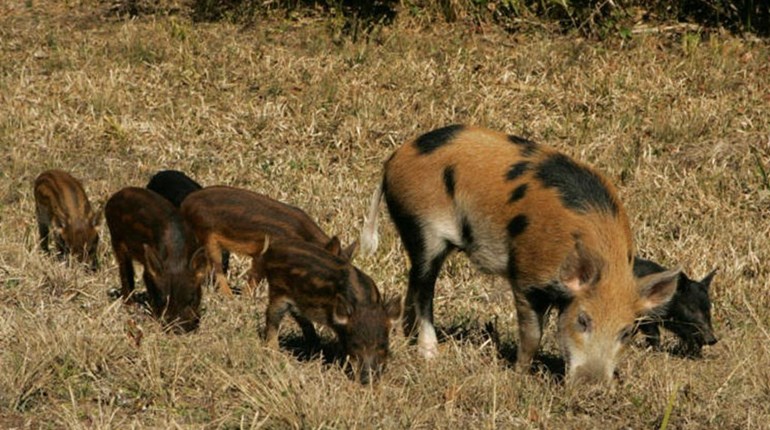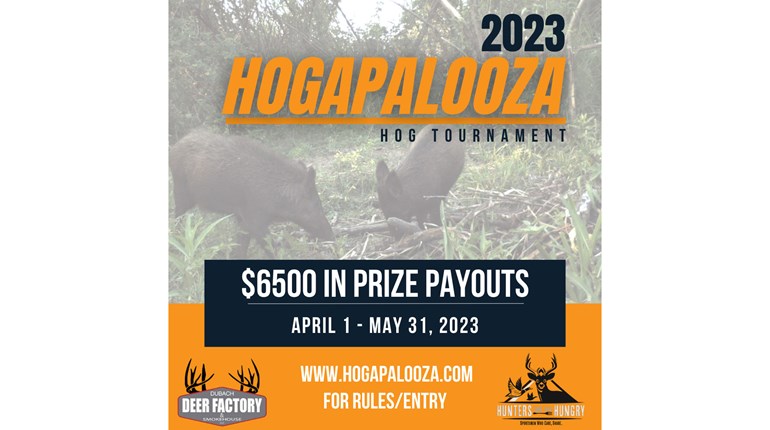It was supposed to be a fishing trip for snook. Tampa Bay in February. Ah! Sun. Fun. An escape from the long Idaho winter. It turned into a muddy hog wrestling contest in a fetid mangrove swamp. We loved it.
Florida and hogs are a natural venue. This is where the first pigs were introduced to North America, escapees from Spanish explorer Hernando de Soto’s explorations in 1540. Today they continue ravaging the tidal flats where Capt. Joel Brandenburg of the Ana Banana Fishing Company sees them while guiding snook anglers. Thank goodness. Betsy and I had trailed a cold front down from Idaho. The snook weren’t playing, so we went after the hogs.
“See the digging there?” Joel nodded toward a mud flat plowed like a freshly turned garden. “Rooting for clams. They were just here.” Joel, his 11-year-old son and first mate, Joseph, had loaned Betsy and me a Weatherby .300 Win. Mag. and a Savage .243 Winchester. We beached their sleek fishing boat and waded the mangrove edge as the mid-morning tide ebbed away, exposing ever more mud flats for hogs to plunder.
We ducked and peered under mangrove limbs as we went, seeing plenty of tracks and churned mud, but no pigs. They were foraging close to cover and could slip away unseen at the slightest alarm. Splish, splash, four of us wading seemed alarming enough, yet I nearly walked into a group of hogs ’round a point of mangroves. They raced for the trees. I knelt, leveled the Weatherby and pulled the trigger when the reticle covered the shoulder of a spotted pig that had stopped for one last look.
“Barbecue!” Joel crowed. We dressed the hog and dragged it into the shade. “Perfect size for eating. Let’s get more.” This was no punch-your-tag-and-go-home hunt. Sky’s the limit. Betsy moved to the front and we waded deeper into the swamp, curling through narrow waterways where herons and egrets flushed. Crabs skittered in the shallows and puffer fish blew up in alarm. Old hog diggings lay melting under healing wavelets, but fresh diggings beckoned. The sun climbed, and where the mangroves blocked the cool north wind, we began feeling like we were finally in Florida—but an ancient Florida like the one de Soto must have found. We neither saw nor heard the buildings and boats that make Tampa one of the busiest ports in the state. We were in a mangrove wilderness, and fresh hog tracks lured us deeper.
By midday we’d followed so many pig tracks into impenetrable mangroves and stalked quietly around so many bends in the shoreline that our focus changed from hogs to roseate spoonbills and showy reddish egrets. The squawking, flapping bird life was primitive, colorful, exotic and so distracting that we nearly missed the black boar lying in the mud at water’s edge. “Geez, there’s one right there!” I hissed.
“Where?” Betsy asked. Joel aimed her toward the pig that, despite our blundering, appeared to be basking half asleep in the warm sun.
“Hold low on the shoulder,” Joel said. I watched through our Swarovski birding binocular. Bang. Whomp. Four hogs exploded from the mud and dived into cover, but not the black boar. He just rolled over, awaiting his trip to the barbecue. It was a long drag back, but two prime porkers compensated for both the work and the uncooperative fish. Joel invited us back for another crack at the snook. We’ll take him up on that. But we’re bringing rifles, too.




































